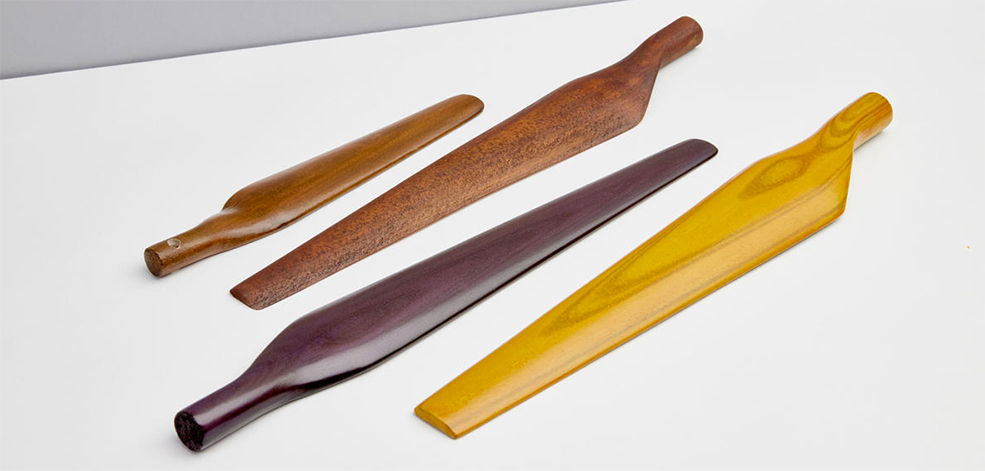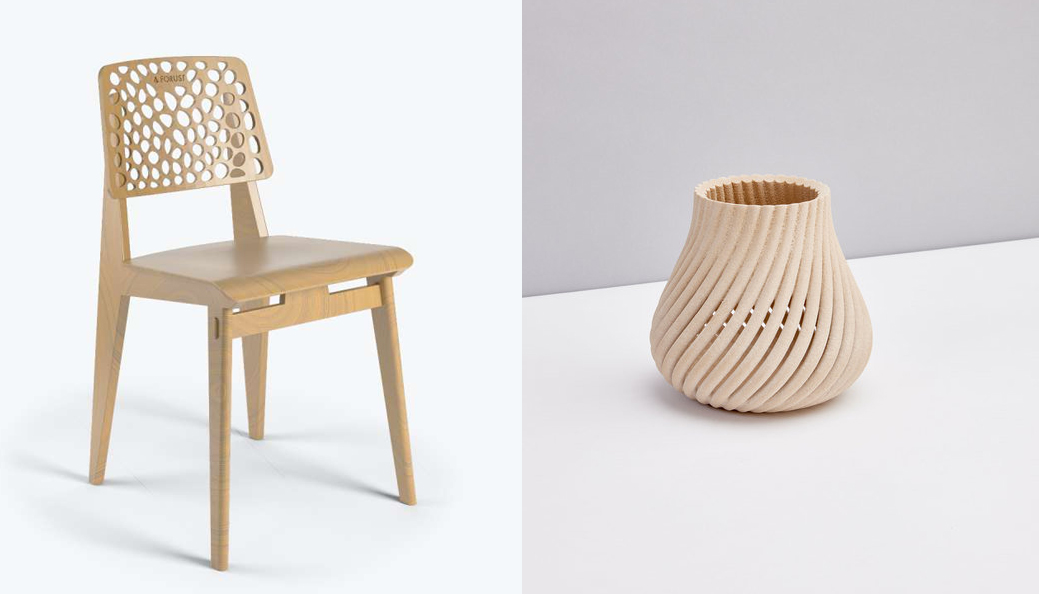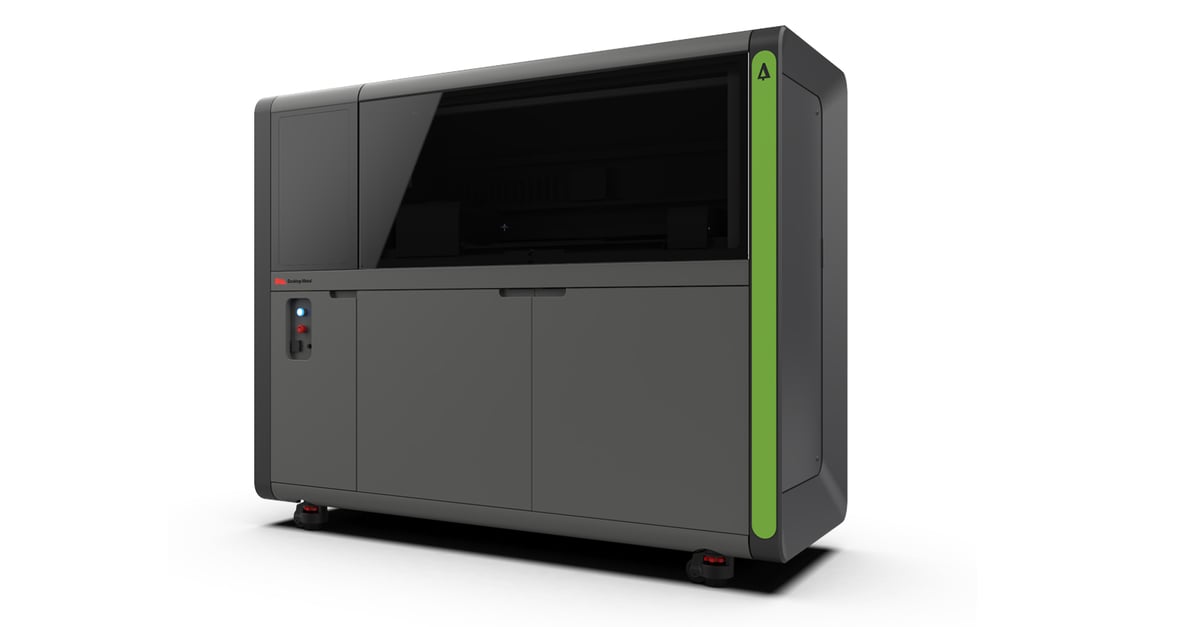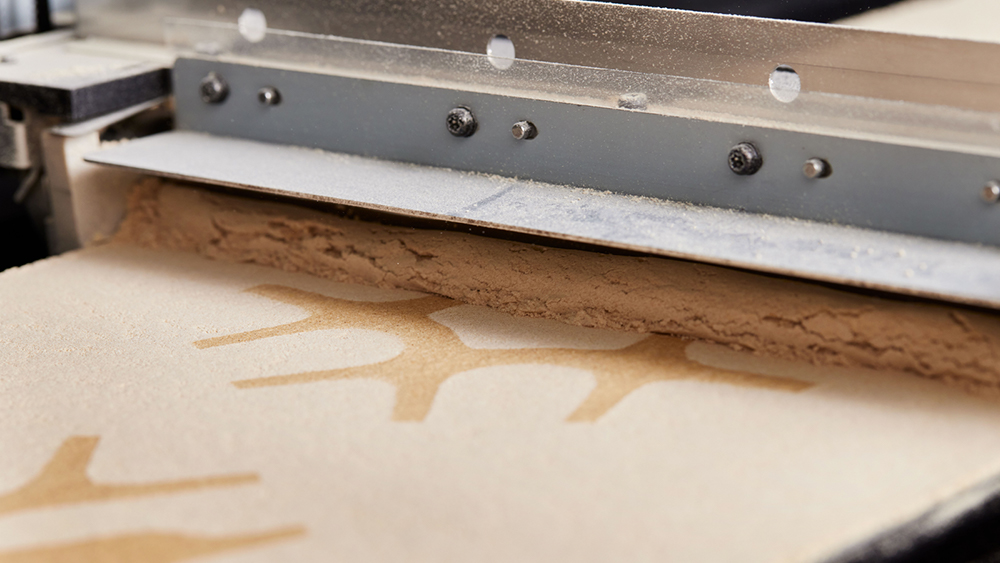
Every year, more than 15 billion trees are harvested producing 84 million tons of wood waste byproducts in the US alone. How many trees could you save if you could use that byproduct to create wood objects?
This question comes from an unexpected eco-ally; American 3D printer manufacturer Desktop Metal. The company, which is known for making metal industrial parts from metal powders, launched a new subsidiary in 2021 called Forust (yes, like forest) to 3D print wood from lumber and paper manufacturing waste byproducts, namely cellulose dust and lignin (a class of complex organic polymers that form key structural materials in the support tissues of most plants). After a little more than a year, the Desktop Metal’s turnkey wood 3D printing system is now commercially available, the company says.
The target buyers for Forust are high-end home decor and lighting designers, architectural designers, and automotive applications, but also 3D printing service bureaus that can offer the technology on a low-volume production basis for designers and luxury brands.

The process uses Desktop Metal’s existing binder jetting additive manufacturing technology on a wood-configured Shop System printer called the Shop System Forust Edition. It can also be used with the robotic arm 3D printer adapted from printer manufacturer EnvisionTec, which Desktop Metal purchased and rebranded as ETEC. Both of these 3D printers are production platforms, so the idea is clearly intended for mass-manufacturing applications.
The goal behind Forust, the company says, is to sustainably manufacture custom wood products, such as furniture, household objects, and architectural pieces that feature a digital grain throughout. Final parts exhibit the functionality and stiffness in line with conventional wood and, after infiltration, can be sanded, stained, polished, dyed, coated, and refinished in the same manner as traditionally manufactured wood products, the company says. Infiltrated Forust parts have strength similar to traditional wood and can be screwed or nailed.

“There are many applications where polymers and plastics are used today where you can now cost-effectively replace with sustainably manufactured wood parts,” says Ric Fulop, founder and CEO of Desktop Metal. “With Forust, we have the opportunity to have a meaningful impact on sustainability, climate change, and waste issues that we as a humanity have brought to the planet. For each tree saved, we are reducing the carbon footprint by a metric ton over its lifetime.”
For now, however, the Shop System Forust Edition only works with Desktop Metal-provided wood powders.
Forust Wood Powder is a proprietary blend of raw or unfinished maple and oak sawdust from the traditional wood milling industry, the company says. The material used as a binder, Forust Binder, comes in clear and brown colors to bind wood powder particles and create natural-looking wood grain patterns that flow across the entire part. After printing, parts need to be infiltrated with USDA-certified bio-based resins.
Although the process is far from actually saving forests, Desktop Metal says it is developing guidelines that would allow customers to print their own recycled sawdust powders in the future.

Forust as a concept and a company was founded in 2019 but never achieved mass appeal or backing as a viable industrial solution, something corporate giant Desktop Metal is determined to change.
Nevertheless, the idea that some manufacturers may start to consider replacing plastics (especially those derived from fossil fuels) and milled wood with waste stream-bound wood byproducts is encouraging enough for now.
Lead image source: Designed by London-based studio HagenHinderdael, Cocoon is a decorative pendant light celebrating an innovative way to reduce timber waste. Photo by Anders Gramer.
License: The text of "Upcycling Wood with 3D Printing to Save Forests" by All3DP Pro is licensed under a Creative Commons Attribution 4.0 International License.